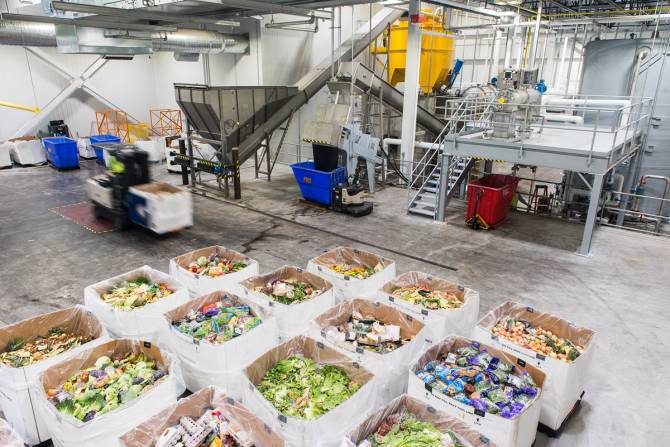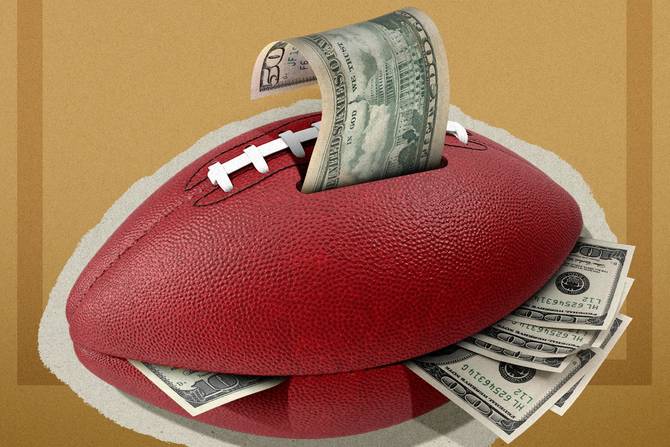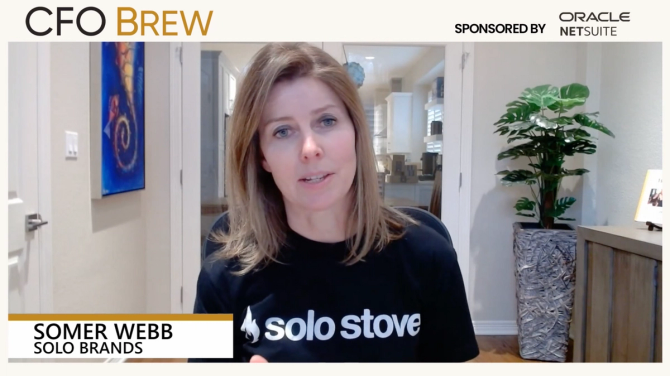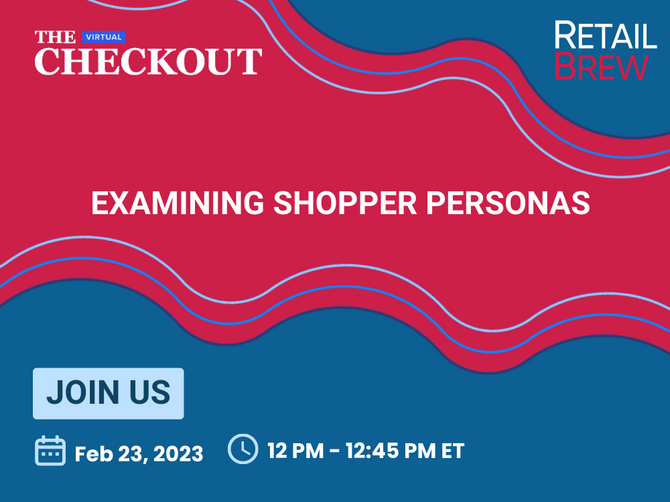Happy Friday Eve. Just a heads-up that Supreme is opening its new Los Angeles flagship today in West Hollywood. As a homework assignment for anyone in the Greater Los Angeles area with the patience to sit in a maybe 900-hour line—drop by and then let us here in NYC know what you think…you know, for research purposes.
In today’s edition:
—Erin Cabrey, Katishi Maake, Leonard Robinson
|
|
Divert
At the grocery store, consumers most often pass over bruised apples, wrinkled cherries, and wilted greens for their more supple and shiny counterparts. While the amount one consumer passes up may not sound like a lot, it adds up.
The US wastes 119 billion pounds of food every year, and commercial waste–across food service, manufacturing, farms, and yes, retail—accounts for 61% of this.
The biggest cause—according to Ryan Begin, co-founder and CEO of retail food-waste reduction company Divert—is people. But this waste isn’t just picky shoppers’ fault; things like operations, marketing, and merchandising all play a part, especially now, as retailers are trying to “do more with less” amid high labor costs and turnover, Begin said.
Since 2007, the Massachusetts-based company has worked to cut down food waste people cause with three other P-words: prevent, provide, and power. To do so, it has partnered with 5,200 retailers like Kroger, Albertsons, CVS, Target, and Stop & Shop, establishing processes to keep food sellable longer, and to donate or create clean power with the food that’s not.
According to Divert, it has redirected 220,000 tons of waste along the way, and with an eight-year expansion plan and new food donation legislation on its side, it’s aiming to further grow its impact and shrink landfills.
Cut your losses: According to Begin, “The best thing that any retailer can do to save money is to buy food and sell food.” Sounds simple and obvious enough, right? But it doesn’t always happen, especially with fresh food, which has the highest loss rate at grocers.
Strawberries, for example, are among the retail items shoppers complain about the most, he said. They’re hard to transport, and suppliers and retailers can’t control the timing of ripeness like they can with bananas.
Keep reading here.—EC
|
|
|
We know, we know—easier said than done. It’s been a bumpy few years for eCommerce marketers, and today’s economic concerns aren’t helping. But you don’t have to brave uncharted waters alone.
Wunderkind’s experts have compiled their top predictions for the year ahead. To learn all 5 and break down the implications, tune in to their on-demand virtual webinar: 5 Predictions for eCommerce Marketers in 2023.
Toss that crystal ball and hear from marketing pros on topics such as generative AI’s role in digital marketing, how to become discoverable in an oversaturated marketplace, top takeaways from the holiday season, and plenty of other pressing subjects.
Curious? Intrigued? (Relieved?) Same. Get comfy and watch the webinar here.
|
|
Francis Scialabba
While Eagles fans are still licking their wounds, retail and CPG brands are reaping the rewards from their 2023 Super Bowl ads.
Roughly 113 million people tuned in to last Sunday’s game, on par with the 112 million viewers from 2022, according to Nielsen. With the high viewership, brands that mostly leaned into humor, according to Nielsen competitor iSpot.TV, were able to drive above average purchase intent from viewers, with 22% of respondents indicating they were “much more likely” to purchase the advertised product after viewing an ad.
Alcohol brands—including Anheuser Busch, Heineken, Diageo, Rémy Martin, and Molson Coors—were big advertisers in this year’s big game. Packaged foods staples—like Doritos, M&Ms, and Planters—also ran spots.
-
The average ad cost $7 million this year for up to 30 seconds, up from $6.5 million from 2022.
- Fox, which hosted the broadcast, delivered 64.1% of all advertising impressions during the game and 83.4% of all TV ad impressions compared to other networks.
Stunt on them: One of the commercials that garnered the most impressions came from pet food brand The Farmer’s Dog. The company purchased a 60-second spot, and it was one of five commercials from Sunday that had at least 100 million household TV ad impressions, per iSpot.
For the M&M’s commercial, the company pulled a bait and switch and permanently brought back its “spokescandies” that it previously said it would ax in favor of new representative Maya Rudolph. Steve Merino, chief creative director at Aloysius Butler & Clark, told Marketing Dive that M&M’s failed to take advantage of the moment. “I’m still not 100% sure what M&M’s was trying to do,” he said.
Keep reading here.—KM
|
|
At a recent live event, CFO Brew spoke to Adrianne Lee, CFO of Overstock.com, and Somer Webb, CFO of Solo Brands, “about lessons each of them learned from the supply-chain crisis that emerged during the pandemic,” writes CFO Brew’s Leonard Robinson. Here’s an excerpt:
[Webb]: You can’t sell a product that you don’t have, at least for a certain period of time. Your consumers are forgiving and they will buy it for a certain period of time. We’re not like refrigerators, however, where people will wait for two years. There is a certain amount of time that you have when you’re on consumer discretionary spending.
Read the whole interview here on CFO Brew.
|
|
|
The checkout of the future. Don’t make customers create another login and password for your e-commerce shop—many won’t bother. Forever 21 found a simpler solution with Bolt’s One-Click Checkout. The result? A seamless shopping experience that retains customers with a 63% higher checkout rate. Read about it here.
|
|
Today’s top retail reads.
Number go down: Bed Bath & Beyond’s stock fell 65% as it announced it reached a financing deal with Hudson Bay Capital Management, leaving its current investors wondering if bankruptcy is off the table. (the Wall Street Journal)
Burn notice: It’s nearly three years since the start of the pandemic, but with economic uncertainty and more stringent return-to-office demands, worker burnout is now at an all-time high. (Bloomberg)
Food for thought: More states are testing Medicaid programs that will provide people more healthy food options and potentially lower costs. In some states, this could result in offering grocery store gift cards, kitchen supplies, and “medically tailored meals” to patients. (USA Today)
|
|
Cracking the code on your customers can feel impossible, but Retail Brew is here to help you conquer this challenge. Join us on Thursday, Feb. 23 for a conversation with industry experts about techniques and tactics your brand can lean on to effectively reach today’s shoppers. Oh, and did we mention this virtual event is completely free? See you there!
Register now.
|
|
-
McDonald’s will introduce plant-based nuggets in Germany.
-
Kraft Heinz will pause price hikes as its latest earnings beat expectations.
-
Rich Paul, LeBron James’s agent, is introducing a new sportswear brand in partnership with New Balance.
-
Ikea says its annual carbon footprint fell 5% last fiscal year after a boost in renewable energy use.
-
H&M has partnered with German recycling group Remondis on a venture to collect and sell unwanted textiles and garments.
-
Chick-fil-A opened a “Brake Room” for delivery drivers in NYC.
|
|
The numbers you need to know.
Overproduction of products has long-been an issue that has plagued the fashion industry. Many brands have attempted to curb their carbon footprint with resale and emission-reduction programs, but there are other alternatives.
Fashion forecasting technology, which allows for more purchases in line with customer demand, can reduce overproduction by an estimated 5–15% by product category. This represents a 3% cut in carbon emissions, according to a study from OC&C Strategy Consultants with WGSN.
A 2022 case cited in the study found that a mass-market retailer could have improved its margins by $1.2 million–$1.8 million on a women’s skinny jeans line if more accurate forecasting data was available. Purchasing in line with the decline in market demand would have resulted in 10,000–40,000 fewer units of unused stock.
“We speak and work with fashion brands that are under significant pressure as the complexity of business models continues to increase, cost inflation rises, and there is a need to operate more sustainably,” Mairi Fairley, head of OC&C Strategy’s retail practice, said in a statement. “Evolving planning and buying to be more demand-led is a practical first step, enabling significant margins to be gained, and unnecessary waste and CO2 emissions to be reduced.”
|
|
Catch up on the Retail Brew stories you may have missed.
|
|
|
Written by
Erin Cabrey, Katishi Maake, and Leonard Robinson
Was this email forwarded to you? Sign up
here.
Take The Brew to work
Get smarter in just 5 minutes
Business education without the BS
Interested in podcasts?
|
ADVERTISE
//
CAREERS
//
SHOP 10% OFF
//
FAQ
Update your email preferences or unsubscribe
here.
View our privacy policy
here.
Copyright ©
2023
Morning Brew. All rights reserved.
22 W 19th St, 4th Floor, New York, NY 10011
|
|









